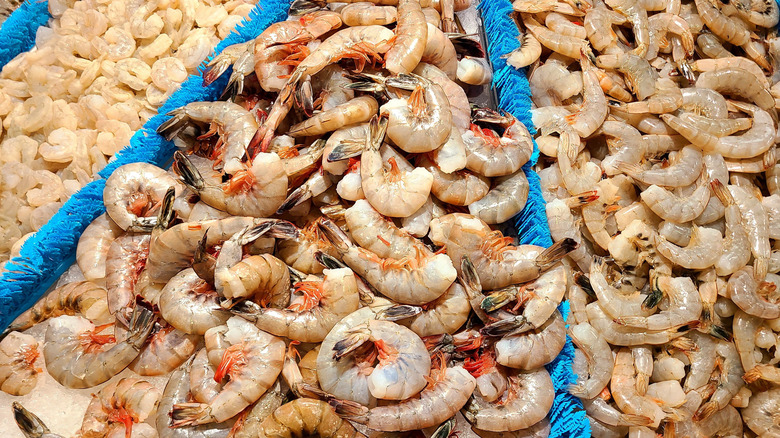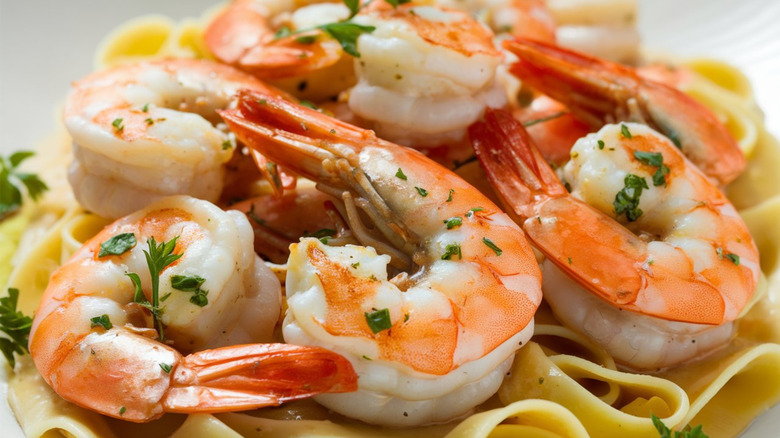Decoding The Meaning Behind Grocery Store Shrimp Sizes
Shrimp have long been the most popular seafood in the United States, bumping canned tuna from the top spot in 2000 and holding on to the title ever since. But even with its popularity, it can still be confusing to know what to buy. Shrimp are often classified by size. Often the sizes are labelled as small, medium, large, jumbo, and colossal; other times seafood retailers will use numbers. In both situations, it's not always clear what choice is best. Marissa Stevens, recipe developer and founder of Pinch and Swirl, gave us the details on how shrimp sizing works.
"The numbers matter most (the count per pound)," Stevens told The Takeout. That's to say, the size numbers signify the amount, by count, of shrimp in a pound. "Easy rule: The lower the number, the bigger the shrimp. For example, U/10 means under 10 per pound, then 10/15, 16/20, 21/25, and so on." If the slashes are confusing you, they signify the range. So a 10/15 will have 10 to 15 shrimp in a pound. It goes from the largest U/10 shrimp to the smallest 71/90 or even 91/100. There may also be a "P" before the number for "Plus," meaning over that number per pound. Weighing how many shrimp are in a pound usually includes the shells but not the heads. They're usually only about one count-per-pound size number higher without shells.
Things aren't as simple with size names. "The names like 'jumbo' or 'colossal' aren't regulated," Stevens explained. That means large could be 31/35 shrimp at one retailer, 26/30 at another, and yet another count someplace else. Going by numbers is more consistent.
Choosing the right size of shrimp
Size isn't the only piece of info on the label worth understanding. "I also look for processing codes if I'm buying shrimp in bags," said Stevens. These include "HLSO (headless, shell-on), P&D (peeled and deveined), and EZ-peel (shell slit for easier peeling)." Whether fresh or frozen, unpeeled shrimp costs less. Not only is it cheaper, keeping the shell on during cooking can improve the flavor. Remove the vein (if it hasn't already been done) on all but the smallest of shrimp. This is the digestive tract which contains the shrimp's waste. It's not harmful, but it can be sandy and bitter (and it's gross). There are plenty of other shrimp-buying secrets shoppers should know, like how you should stay away from precooked shrimp unless you want to ruin your meal.
Now that you understand sizing and other labeling practices, which size shrimp should you buy? The best choice will depend on what you're preparing. However, Stevens has an overall favorite: "Though larger shrimp are tempting for convenience, I find they're typically less flavorful than smaller shrimp. For my taste, medium (41/50) are best."
Smaller shrimp cook faster and are more delicate, but they also soak up marinades and sauces quickly. They're good in pastas, soups, dips, and shrimp salad, a refreshing barbecue summer side. Medium and large are popular sizes which you can stir-fry, sauté, or fried. The largest shrimp are firm and meaty and shine when grilled, broiled, or stuffed. They're also good in shrimp cocktails or baked wrapped in bacon.

